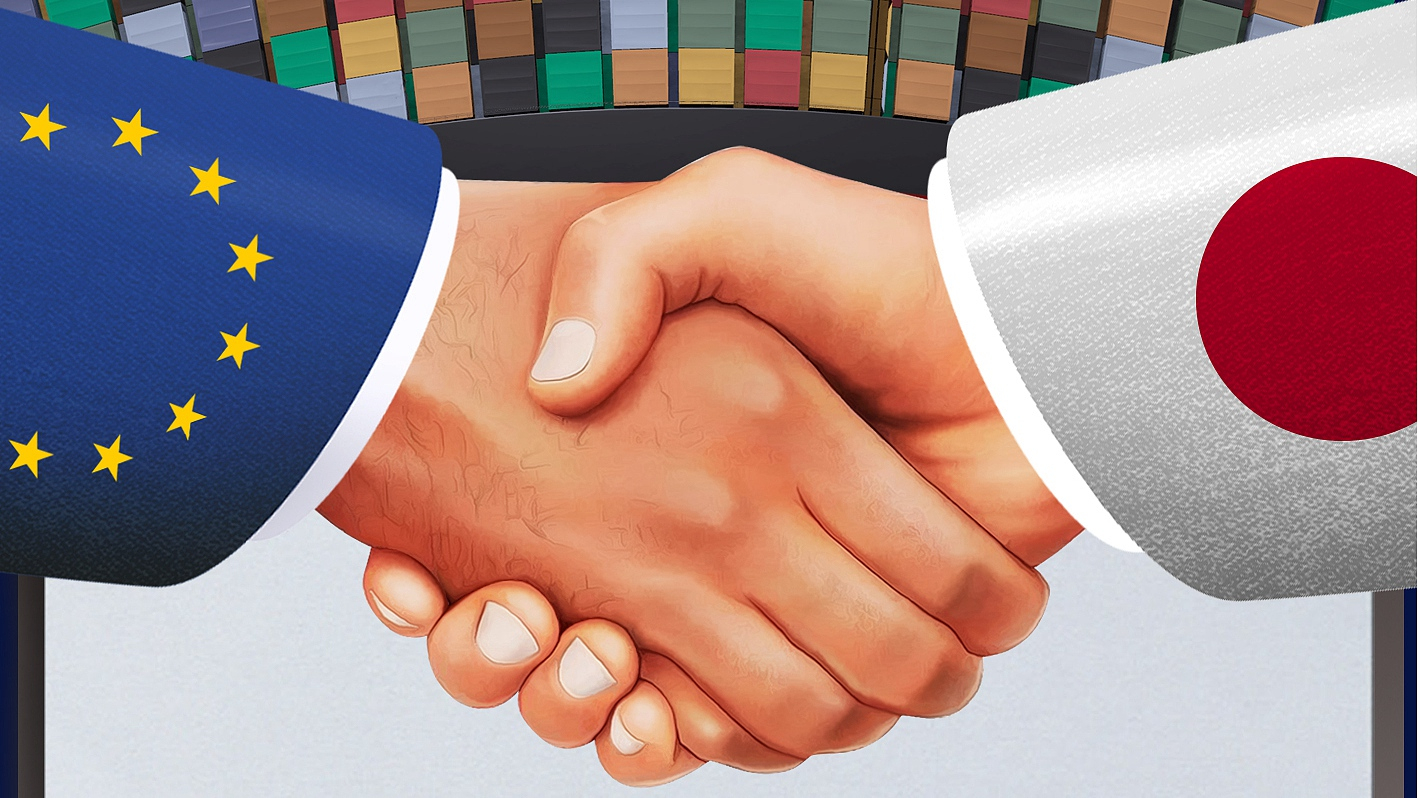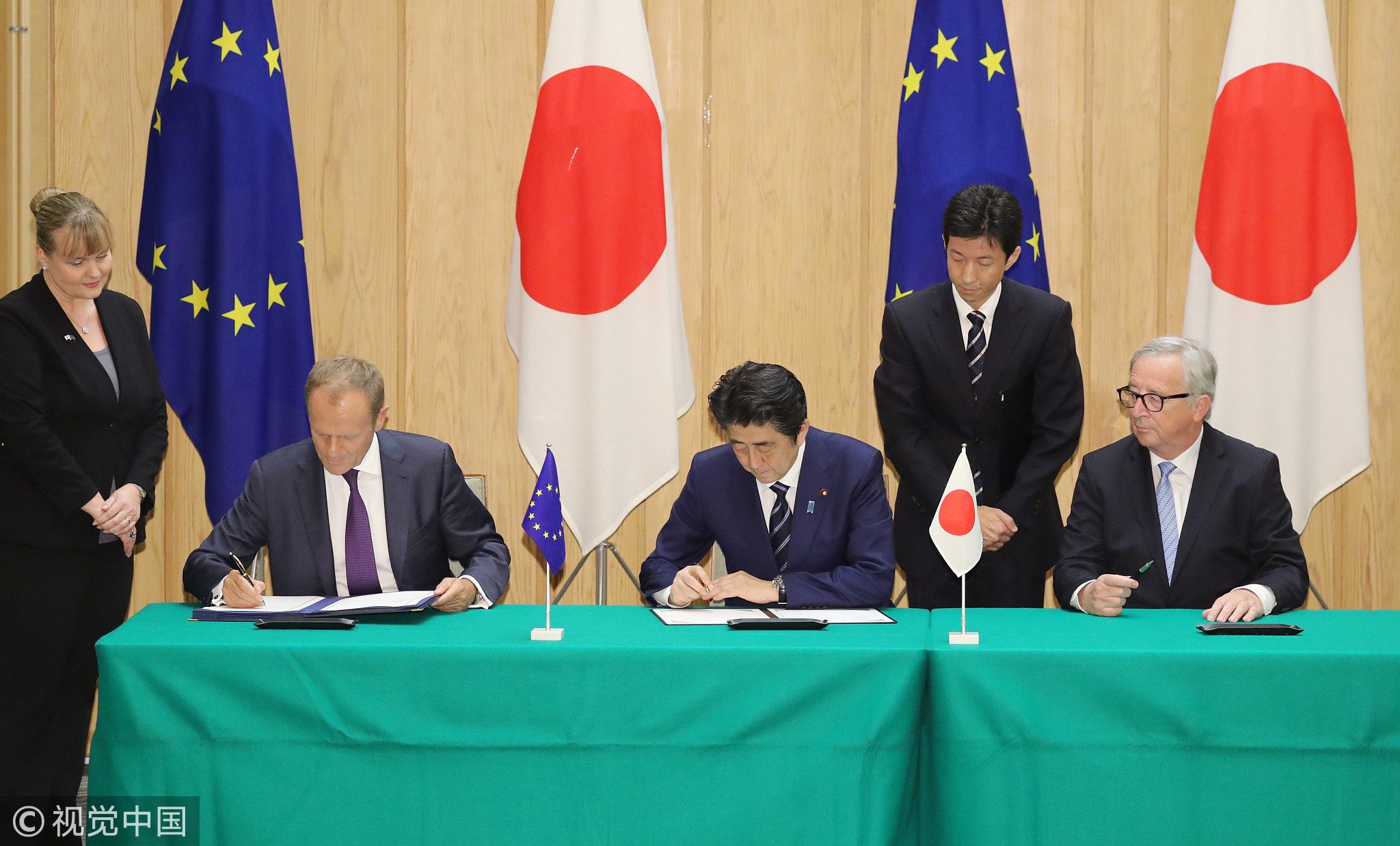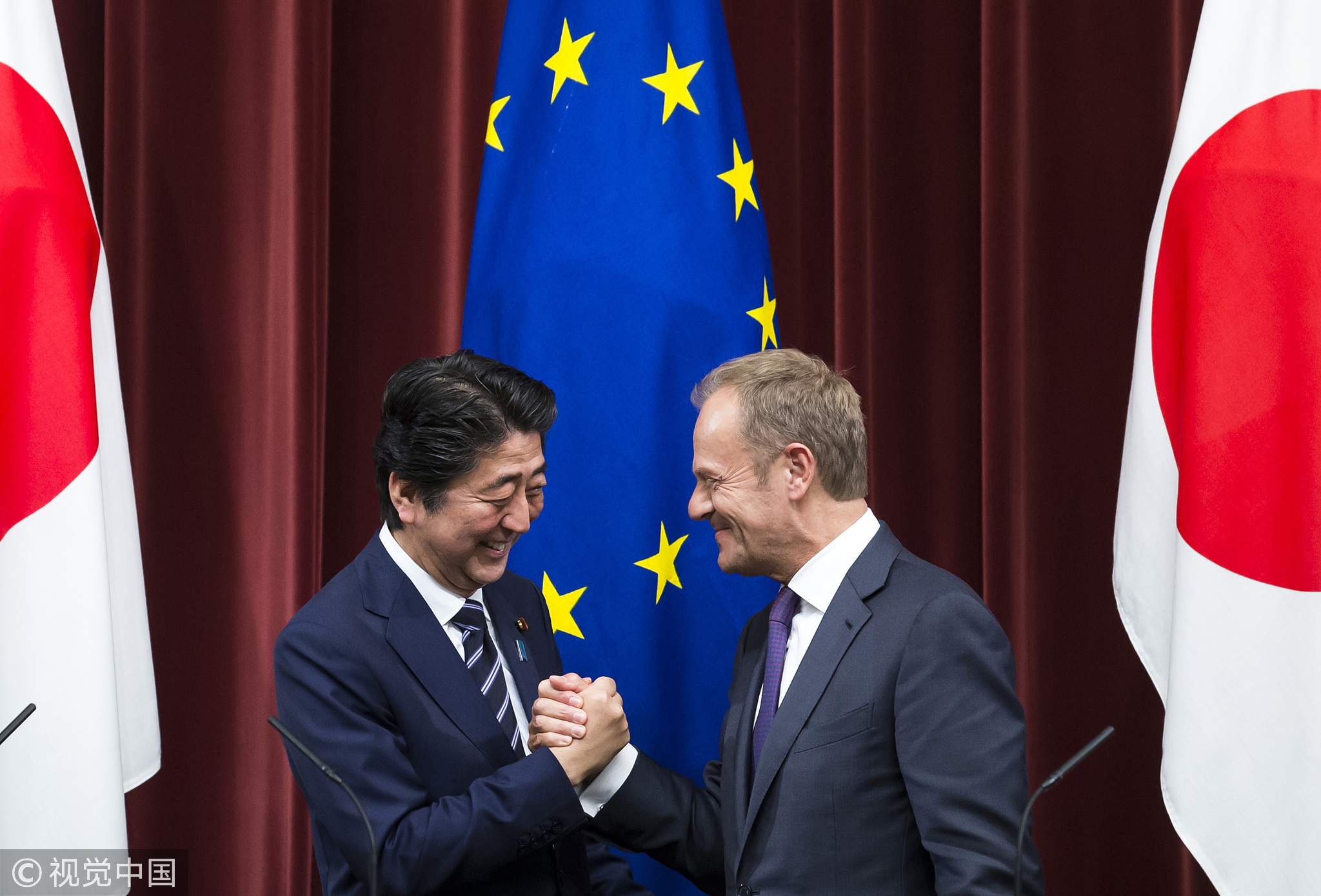
Opinions
18:01, 19-Jul-2018
Opinion: Japan-EU trade deal – A strong message against Trump’s trade protectionism
Updated
17:46, 22-Jul-2018
Zhang Bei

Editor’s note: Zhang Bei is an assistant research fellow of the Department for European Studies at China Institute of International Studies. The article reflects the author’s opinions, and not necessarily the views of CGTN.
Widely seen as a clear message against trade protectionism, the European Union and Japan signed the EU-Japan Economic Partnership Agreement (EPA) in Tokyo on July 17. Though the event was only ceremonious, as the two sides concluded negotiations last December, it received worldwide attention as an example of global trade liberalization in an age when it’s under threat from Trump’s trade protectionism.
The EU-Japan EPA is significant for both sides in every sense, as it sets to eliminate 99 percent of tariffs facing Japanese exports to the EU and 94 percent of tariffs on EU exports to Japan, before eventually reaching 99 percent in a few years.

Foreground from left to right, European Council President Donald Tusk, Japanese Prime Minister Shinzo Abe and European Commission President Jean-Claude Juncker attend the signing of an EPA between Japan and the EU during a Japan-EU summit meeting at the prime minister's office in Tokyo, Japan on July 17, 2018./VCG Photo
Foreground from left to right, European Council President Donald Tusk, Japanese Prime Minister Shinzo Abe and European Commission President Jean-Claude Juncker attend the signing of an EPA between Japan and the EU during a Japan-EU summit meeting at the prime minister's office in Tokyo, Japan on July 17, 2018./VCG Photo
Japan is the European Union’s second biggest trading partner in Asia. The European Commission estimates that the agreement will eliminate one billion euros in tariffs that European companies pay per year, and will lead to an increase in trade between 16 to 24 percent.
For Japan, it will provide much-needed impetus for the embattled “Abenomics,” as Prime Minister Abe is facing challenges in pushing forward economic reform and revitalization in Japan. Sectors from both sides will benefit with the machinery and automobile industry in Japan, and agriculture and food industry in EU being some of the clear winners.
It is obvious that the EPA comes from years of hard negotiations. The two sides started negotiations in 2013, but was only cemented when political will started to grow after 2017.

Shinzo Abe, Japan's prime minister, left, shakes hands with Donald Tusk, president of the European Union (EU), during a joint news conference following a summit at the prime minister's official residence in Tokyo, Japan, on July 17, 2018./VCG Photo
Shinzo Abe, Japan's prime minister, left, shakes hands with Donald Tusk, president of the European Union (EU), during a joint news conference following a summit at the prime minister's official residence in Tokyo, Japan, on July 17, 2018./VCG Photo
The free trade agreement between these two major global trading actors forms the world largest free trade area, in a sense, affecting a population of over 600 million and affecting nearly one-third of the world economy. Since Trump has taken office, the global trade environment has changed significantly for the worse; global economic integration has been increasingly questioned or even reversed, and the world economy is facing uncertainty brought by trade wars started by Trump.
With the Transatlantic Trade and Investment Partnership (TTIP) on hold and the US’ withdrawal from the Trans-Pacific Partnership (TPP), a successful trade deal between two leading economic powers such as Japan and the EU sends a strong political message: economic integration between countries is both beneficiary for the participating parties and achievable, despite Trump’s negative effect.
In fact, the EU-Japan EPA will not be the last effort in global resistance against the trade protectionism and unilateralism of the US. Europe has continued to pursue other deals around the world, reaching a deal in principle with Mexico, and making progress in talks with a long list of countries that includes Australia, Chile, Indonesia, New Zealand, and Tunisia.
Japan and other countries are salvaging what’s left of the TPP in promoting a Comprehensive and Progressive Agreement for Trans-Pacific Partnership (CPTPP), and with signs of thawing between Japan and China, a revitalized Regional Comprehensive Economic Partnership (RCEP) is on the horizon.
In a word, as the US is inflicts harm on itself and others by pursuing protectionist measures and abandoning global trade liberalizing efforts, the world will not stand idle. Instead it will take action and send a strong signal supporting an open, global trade order based on rules and cooperation.

SITEMAP
Copyright © 2018 CGTN. Beijing ICP prepared NO.16065310-3
Copyright © 2018 CGTN. Beijing ICP prepared NO.16065310-3